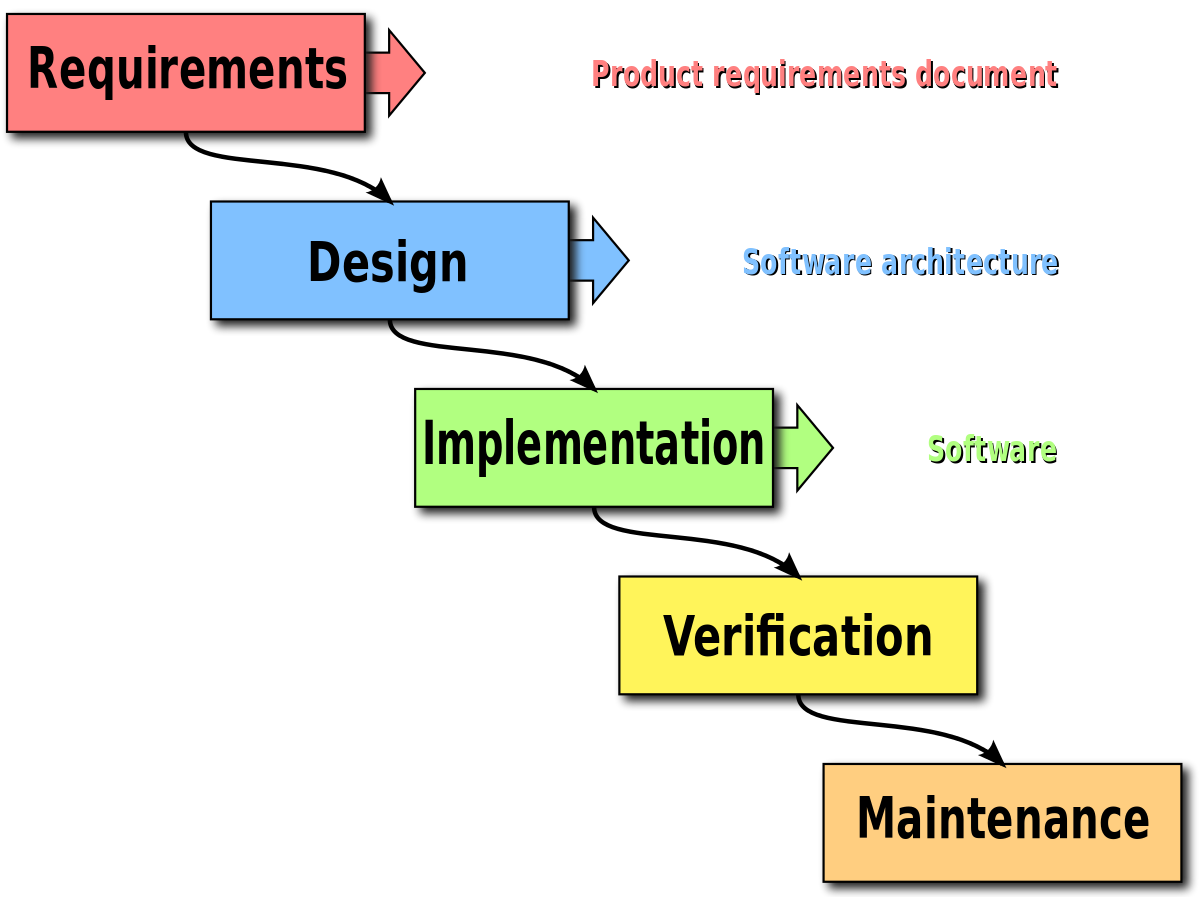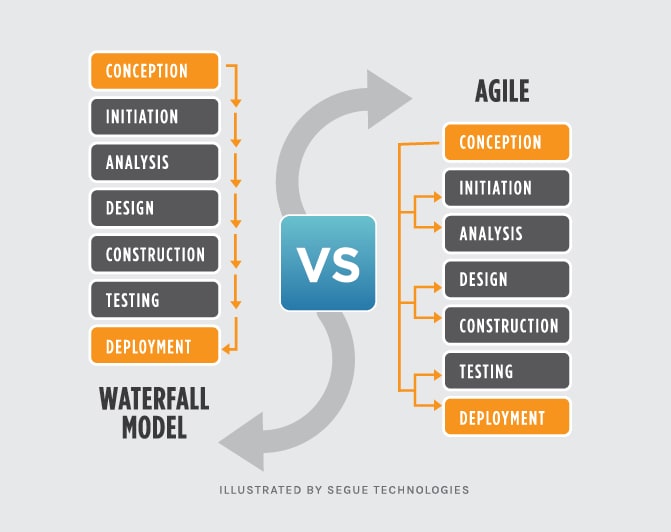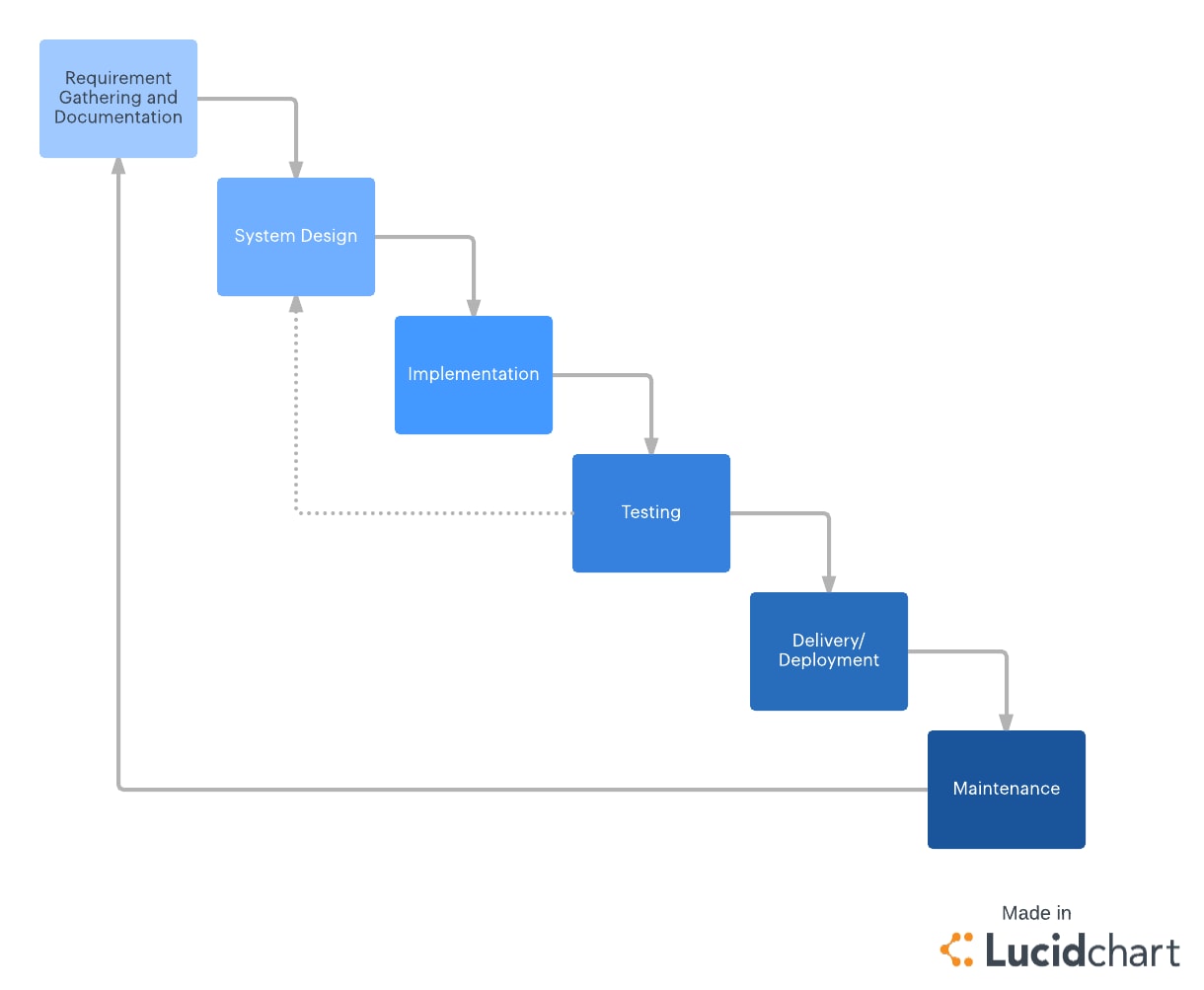Waterfall Project Management – The most straightforward way of managing a project
Of all the various types of project management practices, waterfall project management is the oldest and most commonly used. It's a practice that outlines a categorization of phases to follow, each one is to be completed before moving on to the next. Almost every industry has adopted this method, from construction and engineering to software and media production. In this article we will be discussing what waterfall project management is all about, how it is different from Agile and what are its key features.

- Part 1: What is waterfall project management
- Part 2: Waterfall vs Agile: What's the difference
- Part 3: The key stages in the waterfall project management methodology
- Part 4: Product prototype tool you may need
What is waterfall project management?
Waterfall is a project management approach where you complete the project in different stages and move step by step towards the ultimate release to the consumers. In this method you make the plan up front and then implement in a linear fashion, assuming that there won't be any changes in the plan as you move forward.
Waterfall project management is when you take the traditional project management and then apply software development to it. Waterfall project management is not an invention rather, it is a name given to this approach once we realized that there are other ways to manage projects (like agile project management). Various project managers can and have formed their own versions of the waterfall methodology that best fits their specific situations, some of which have become pretty popular in their own right.
Waterfall was the first software development methodology, which was inherited from the manufacturing and construction industry where you can't afford to iterate or go back to the start. But as the software is prone to frequent changes, the waterfall is not the best solution. In many cases waterfall is often mentioned along with Agile however they are very different from each other. The major difference between them is the fact that waterfall approach does not fully support frequent changes, which is why it gets a bad reputation in the software development community, where frequent changes are the norm.
Waterfall vs Agile: what is the difference?
Waterfall vs. Agile
There are two very commonly methods to tackle software projects, one is waterfall methodology and the other method is known as Agile. It becomes easier to understand waterfall when you compare it to Agile. Waterfall and Agile are two entirely opposite project management methods, however, both are equally effective, and can be more or less beneficial depending on the project.
Waterfall Project Management : Each of the stages outlined must be executed in a linear fashion in order to successfully execute the waterfall model. Which means that in order to move forward to the next phase, the previous phase has to be completed, and phases are never repeated—except there is an immense failure that comes to light in the verification or maintenance phase. Moreover, each phase is separate, and pretty much exists in isolation from stakeholders outside of your team. This is particularly true in the requirements phase. Once the requirements of the customer are collected, the customers cease to play any role in the actual development of the software.
Agile Project Management : There is a big difference between Agile and waterfall; firstly, with regards to linear action and customer participation. Agile is a quick and iterative process, where the product is delivered in phases to the customer so that they can review and share their feedback. Instead of having the whole thing planned out by milestones, like in waterfall, Agile usually functions in "sprints" where the more important tasks are completed within a short window, typically around two weeks. These prioritized tasks are fluid, and appear based on the success of previous sprints and customer feedback, rather than having all tasks prioritized at the beginning in the requirements phase.

In order to understand the difference between Agile and waterfall it is very important to remember that a waterfall project is a fixed, linear plan which is not to be changed. Each and everything are planned in advance, and customers are able to interact only at the beginning and at the end of the project. Agile, on the other hand, is an iterative process, where fresh priorities are set and requirements are injected into the project after sprints and customer feedback sessions.
They key stages in waterfall project management methodology

1. Specification of the Requirements
This stage examines and scrutinizes the business' needs and endorses a solution. The stake holders, project manager and the project sponsor first review any plan that is brought forward. Once that has been done, the requirements are set and the project manager gives options in order to to fulfill those requirements.
2. Design
The design phase sets and documents the options that have been selected in the first phase. This is called a "design document". It lays out each and everything that would be required to get the project running: technical specifications, procedures and processes, testing criteria, and success metrics.
3. Execution
It is now time for the project manager and his team to implement the design document. They will make an effort to stick to to the specifications, procedures, and timelines laid out in the early phases. Complex projects may even make use of an extra waterfall sequence to execute sections of the project.
4. Testing
The testing phase checks the deliverable against the standards and metrics determined by the stakeholders and documented in the design document. If the project fails the quality check, the team may be required to go back to the implementation phase for further rework.
5. Installation
Once a project passes the testing phase it is ready to be released to the end user. Ideally, the product should be fully operational and meet the standards for success as defined by the design document.
6. Maintenance
Many projects still persist even after installation phase. Project teams go on support mode (or have a separate support team) so they can assist end users should any malfunctions occur. Products that require regular updates or upgrades will also be covered under the maintenance phase.
Product Prototype tool you may need
One of the worst tasks that a product manager is faced with relates to presenting a product wireframe for showing to the designers. If you are a product manager, you would know the headache that comes along with presentation of your product wireframe to a potential client. How about we tell you all your problems are about to be solved?
Most professionals prefer Wondershare Mockitt for its simple outlook and user-friendly interface. It has unique embed elements to save your design time. You can find ready to use templates, widgets focusing on a wide range of industries. Here comes a short description of its stunning features below.

- Fast prototyping – Create a complete prototype in only 10 minutes! Wondershare Mockit is a lightweight online tool with an intuitive interface. The simple drag and drop workflow makes the learning curve shallow. It's easy for anyone to get started!
- Prototyping on the Cloud - Olympic Games Cloud service infrastructure! Wondershare Mockitt is a cloud-based prototyping platform. Test, share, and gather feedback quickly while saving data.
Waterfall Project Management was never a breeze before!

